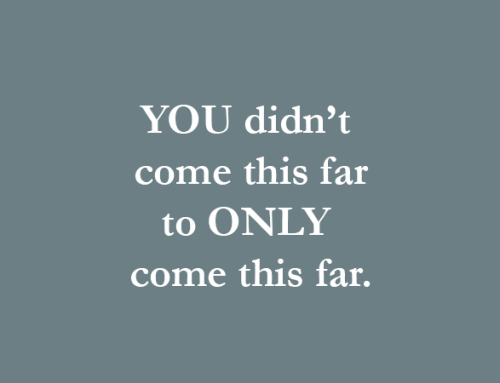
Transitions at the top of an organization are delicate and fraught with challenges.
Statistics show that many leadership transitions fail, leading to disrupted business continuity, diminished organizational performance, and strained relationships among senior team members.
For Owners, Founders and CEO’s, these challenges are compounded by the personal and professional stakes involved. The value of the business itself is often at risk, along with the outgoing CEO’s legacy and the success of the new leader.
At Herald Strategy, we understand that this isn’t just about handing over a baton—it’s about safeguarding the future of your company.
We view succession planning not as a short-term handover but as a strategic process that should be guided by the company’s vision for the next 3–5 years. This should align every decision, action, and relationship during the transition with a clear focus on the future performance of the business.
Why the Next 3–5 Years Matter
A leadership transition isn’t only about appointing a new leader; it’s about preparing the organization to meet its future challenges and capitalize on opportunities.
This forward-looking perspective should act as the foundation for crafting a succession plan that is both practical and measurable. It ensures that all stakeholders—from the outgoing CEO to the incoming leader and the senior team—are unified around the ultimate goal: the sustained performance of the business.
The next 3–5 years should serve as the lens through which every decision is evaluated, and this roadmap requires clarity in some key areas:
What does the vision for the company’s future look like?
What skills are needed to drive the business forward during this time?
What challenges and opportunities will the business face?
Why Leadership Transitions Often Fail
Leadership transitions are rarely smooth. Common pitfalls include:
- Lack of clarity in roles and expectations during the transition period.
- Resistance from senior teams adjusting to a new leader.
- Insufficient development of the incoming leader, leading to credibility challenges.
- Poor hand over as loss of day-to-day control for the outgoing CEO can result in feelings of underutilization or diminished self-worth.
For many CEOs, the process of stepping back can feel challenging – you are relinquishing control of a company you’ve nurtured and grown. It’s natural to feel conflicted—on one hand, excited about new opportunities; on the other, anxious about the company’s direction under new leadership. And adding to the complexity, the incoming leader may struggle to establish authority, while the executive team may resist changes to established dynamics.
The goal for every succession plan should be to ensure that transitions aren’t disruptive, but instead build long-term value.
A Measurable Process to Align Vision and Action
A robust process should ensure that every aspect of the transition is aligned with the 3–5-year vision of the company. The measurable outcomes of this process provide certainty, clarity, and guardrails for a period that might otherwise feel uncertain and ambiguous.
Of course, the detailed process is bespoke to each situation but there are some best practises relevant to every scenario:
1.
Assessment of the Senior Team’s Expectations
Every leadership transition disrupts existing relationships and workflows. To mitigate this, begin by understanding what the senior team currently expects from the CEO and reframing those expectations in the context of the future. What challenges will the business face in the next 3–5 years, and how will the CEO and team’s roles evolve to meet those challenges? This step ensures that the team’s expectations are rooted in the company’s strategic needs, not just their past experiences.
2.
Evaluation of the Incoming Leader’s Strengths
The incoming leader must be assessed not only for their current abilities and for how their strengths align with the company’s future vision. If there are gaps, then what development areas must be addressed? This ensures that the leader is not only prepared for their new role but also positioned to lead the company effectively through its next phase.
3.
Action Plan for the Outgoing CEO
The outgoing CEO plays a critical role in legitimizing the new leader and preparing the organization for the transition. A key part of their legacy will be how well they align the team and the new leader with the future vision. A robust process will include a detailed action plan for the CEO to step back in a way that supports continuity, strengthens the team’s trust in the incoming leader, and ensures the company’s strategy remains the central focus.
Practical and Measurable Action Plans
Once we’ve gathered these insights, we develop an action plan that balances three core objectives:
Empowering the incoming leader with the skills, support, and confidence to lead effectively.
Facilitating the senior team’s transition to ensure alignment and collaboration with the new leader.
Helping the outgoing CEO navigate their own transition in a way that preserves their legacy and maintains their self-worth.
For both the incoming leader and the senior team, we create clear, measurable action plans that address key performance areas, relationships, and milestones. These plans serve as roadmaps for the transition, providing accountability and ensuring that progress can be tracked and adjusted as needed.
Emotional Intelligence and the Human Element
While the process is rooted in measurable outcomes, the human side of succession planning cannot be ignored. Transitions often involve ego, emotions, and resistance to change. The outgoing CEO may struggle with the loss of day-to-day control, while the senior team may hesitate to fully support the new leader.
Emotional Intelligence is key to navigating these challenges. The human element is at the heart of any successful transition. Emotional Intelligence is critical—not just for the incoming leader but for everyone involved in the process.
CEOs and their teams usually need help to:
- Address ego-related challenges that can arise during transitions.
- Build trust between the outgoing and incoming leaders.
- Maintain open communication, ensuring that relationships remain strong throughout the process.
By focusing on emotional intelligence, companies ensure that the transition is more than a change in leadership—it’s a catalyst for long-term growth and stability.
Why This Moment Matters: Your Legacy, Your Company’s Future
For Founders and CEOs, stepping back from day-to-day leadership is an emotional and strategic challenge. But it is also an opportunity to cement your legacy by preparing your company for sustained success. By aligning every decision with the company’s 3–5-year vision and focusing on measurable outcomes, you can ensure that the transition is a moment of growth, not disruption.
Let us help you make this transition a defining moment for your company’s future. Together, we’ll create a plan that prioritizes performance, unites your team, and ensures long-term success.
Experience You Can Trust
At Herald Strategy, we’ve navigated succession planning in over 50 scenarios across industries and global markets. We’ve walked in your shoes, understanding the delicate balance of handing over leadership while protecting the value of your business.




